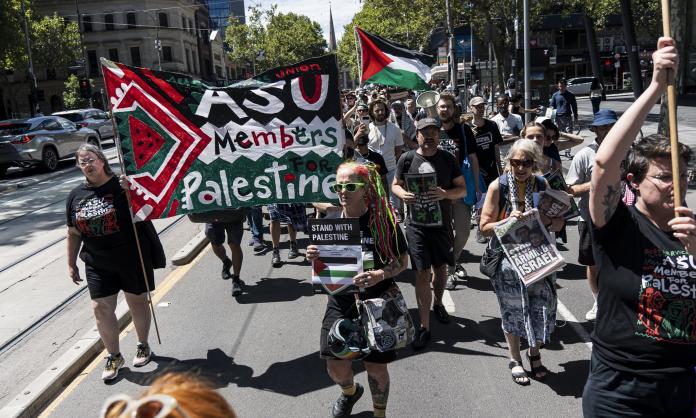After a work-in at the South Clifton (New South Wales) mine in 1972, one miner explained, “It gives you a bit of an idea of how it would be to work under socialism without bosses”. (A work-in is workers refusing to leave a site and showing that they can manage it themselves.) It was just one indication of a period of radical union action in Australia, mirroring the late 1960s and early 1970s working-class upsurge around the world.
Sam Oldham’s book Without bosses: Radical Australian trade unionism in the 1970s, charts some of the more radical actions taken by workers—sit-ins, occupations and the like. As well as demands for better wages and conditions, workers turned to ideas such as getting rid of the bosses and running the workplace themselves—moving towards workers’ control. David Lofthouse, an Australian Manufacturing Workers’ Union (AMWU) shop steward, described it as “a growing realisation by working people that they must control the mode, purpose and quality of the production process which governs their livelihood [in] the running of the industry by the people for the benefit of the people”.
Examples abound in the book, from the well-known Builders Labourers Federation’s takeover of the Sydney Opera House, where they dismissed the foreman and made all the workplace decisions themselves, to many lesser known but equally inspiring mine sit-ins or work-ins and factory occupations. The James North Glove factory in Whyalla, South Australia, for example, was occupied in November 1972 after women workers were made redundant. Instead of accepting the sack, they sat in until finally the owner abandoned the factory. The women took over the site, forming their own cooperative, made decisions collectively and ran production until September 1973.
Whether in reaction to redundancies, individual sackings or the bosses’ refusal to improve wages and conditions, in the radical atmosphere of the day, workers didn’t look for a better redundancy deal or turn to the courts for mediation; they took things into their own hands. At the Nymboida mine in 1975, when the boss shut down the mine, declaring it unprofitable, the workers occupied it until the company handed over the mine to the Miners’ Federation, which ran it in conjunction with the Nymboida membership until 1979, when the seam was exhausted. Photos of happy miners, “without a boss breathing down your neck”, were accompanied by a cheeky challenge to the previous owners, asking if they had any other mines the Miners’ Federation could take over.
Much of this activity was possible because militants in the left-wing unions had built strong shop committees—union delegates in individual workplaces—throughout industry, construction and the docks. Often the shop committees operated independently, negotiating with the employers and taking action, and notifying the union only after they’d won. As the shop committees grew in strength and the ideas of workers’ control gained currency among rank-and-file unionists, labour militants, along with the Communist Party of Australia, held several workers’ control conferences.
While inspiring, few of the examples moved in a more revolutionary direction. They veered more towards demands for nationalisation or state ownership of industry than steps towards the revolutionary overthrow of the state and workers’ power.
In part this also reflected the economic downturn, beginning in 1973, during which workers’ actions were increasingly defensive against sackings, and defeats became more common. The tide in the class struggle was turning and ideas of workers’ control slipped away. In their place, employers pushed for workers’ “participation” or “industrial democracy”, replacing control with an advisory role.
Oldham, however, weakens his case by including examples of cooperatives, union-controlled credit unions and the like as examples of workers’ control, rather than the shift to “service unionism” that they actually represent. As well, he accepts the AMWU’s description of management committees in pre-1989 Yugoslavia as workers’ control—those committees were far from real workers’ control like those, for example, in revolutionary Russia, or in Chile’s cordones and Iran’s shoras in the 1970s. Overall, the arguments made in the book about workers’ control reflect Oldham’s anarcho-syndicalist analysis of union radicalism in Australia in the 1970s.
That said, the book has much to recommend it, detailing as it does a significant period of Australian radical working-class history, in which thousands and thousands of workers defied the employers, the courts, the governments and many times their own leaders, taking radical action to win their demands. Many turned towards ideas of workers’ control. And for short times, as the South Clifton miner recalled, the sit-ins, occupations and the like gave workers a taste of what socialism could be like.
Without bosses is published by Interventions. It can be purchased at Red Flag Books











